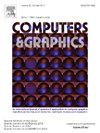COVITON : Consistency driven integration of TPS and flow for virtual tryon
IF 2.5
4区 计算机科学
Q2 COMPUTER SCIENCE, SOFTWARE ENGINEERING
引用次数: 0
Abstract
Achieving realistic garment transfer while preserving both human and garment details, remains a challenging task in signal processing. The garment warping stage in virtual tryon plays a pivotal role in determining the visual fidelity of the final result. Existing methods commonly address this challenge by employing geometric transformations with control points using Thin-Plate Spline (TPS) or flow-based warping techniques. In this paper, we present an approach that jointly refines TPS and flow module’s tryon results utilizing a novel consistency constraint and fuses them through the integration of a (GFAM) Garment Fusion Attention Module. GFAM refines the flow warped garment using an attention based blending strategy that derives from TPS warped garment and integrates background person with the garment image to produce final tryon image. This not only preserves local and global textures but also achieves accurate garment deformation based on the target person’s pose. Our key innovation lies in the introduction of a novel Intra-Field Consistency loss, which ensures that the offset values computed by TPS and flow-based warping methods closely align with each other and GFAM block which facilitates a seamless garment and person fusion for realistic tryon generation. Importantly, our proposed framework represents the first attempt to manoeuvre the TPS module in a parser-free setting. Through extensive experiments and evaluations on VITON and VITON-HD datasets, we demonstrate the effectiveness of our method in achieving realistic and visually appealing state-of-the-art virtual tryon results.

一致性驱动的虚拟尝试的TPS和流集成
在信号处理中,在保留人体和服装细节的同时实现逼真的服装传输仍然是一项具有挑战性的任务。虚拟试衣架中的服装翘曲阶段对最终效果的视觉保真度起着至关重要的作用。现有的方法通常通过使用薄板样条(TPS)或基于流的翘曲技术进行控制点的几何变换来解决这一挑战。在本文中,我们提出了一种方法,利用一种新的一致性约束共同改进TPS和flow模块的试验结果,并通过集成(GFAM)服装融合注意模块将它们融合在一起。GFAM在TPS翘曲服装的基础上,采用基于注意力的混合策略对流动翘曲服装进行细化,并将背景人物与服装图像相结合,生成最终的试衣图。这不仅保留了局部和全局纹理,而且可以根据目标人的姿势实现精确的服装变形。我们的关键创新在于引入了一种新颖的场内一致性损失,它确保了由TPS和基于流的翘曲方法计算的偏移值彼此紧密对齐,并且GFAM块促进了无缝的服装和人融合,以实现逼真的试衣生成。重要的是,我们提出的框架代表了在无解析器设置中操作TPS模块的第一次尝试。通过对VITON和VITON- hd数据集的广泛实验和评估,我们证明了我们的方法在实现逼真和视觉上吸引人的最先进的虚拟尝试结果方面的有效性。
本文章由计算机程序翻译,如有差异,请以英文原文为准。
求助全文
约1分钟内获得全文
求助全文
来源期刊

Computers & Graphics-Uk
工程技术-计算机:软件工程
CiteScore
5.30
自引率
12.00%
发文量
173
审稿时长
38 days
期刊介绍:
Computers & Graphics is dedicated to disseminate information on research and applications of computer graphics (CG) techniques. The journal encourages articles on:
1. Research and applications of interactive computer graphics. We are particularly interested in novel interaction techniques and applications of CG to problem domains.
2. State-of-the-art papers on late-breaking, cutting-edge research on CG.
3. Information on innovative uses of graphics principles and technologies.
4. Tutorial papers on both teaching CG principles and innovative uses of CG in education.
 求助内容:
求助内容: 应助结果提醒方式:
应助结果提醒方式:


